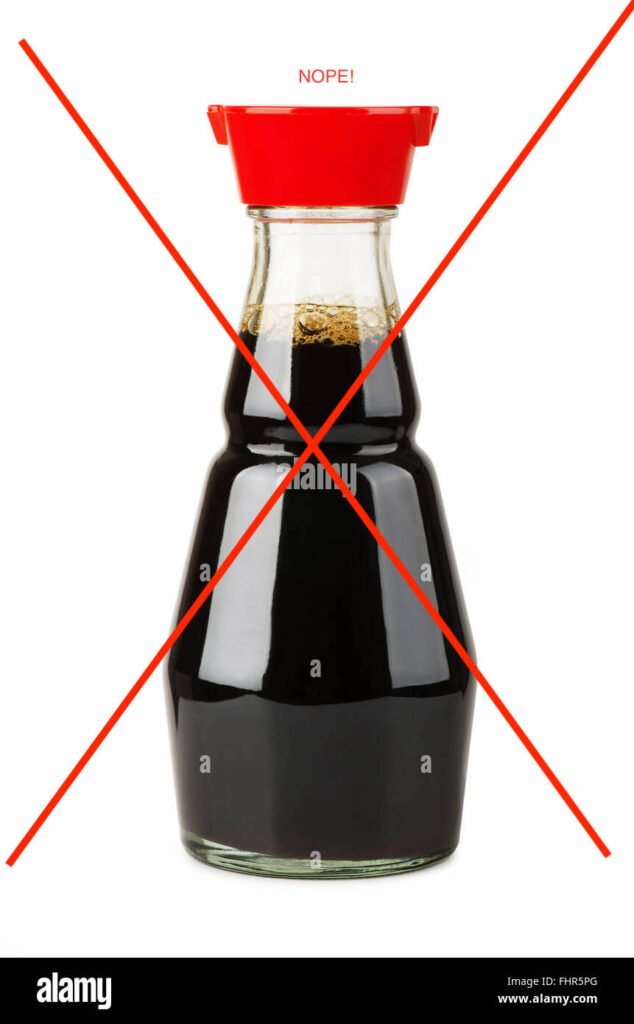Love Japanese Soy Sauce but Gave up Wheat and Soy?

Soy-free and Wheat-free Japanese Condiments
Have Soy or Wheat Allergies or Intolerances? Here’s a list of soy sauce alternatives so you too can still enjoy Japanese cuisine!
When I came to Japan to teach English in 2017, my body was still healing and I couldn’t tolerate any amount of soy sauce. The only paleo-friendly options that were available were Coconut aminos, which I can’t say that I particularly liked the taste. The coconut aftertaste didn’t quite match the Japanese cooking. After living in Tokyo for some time, I have come to find these alternatives made from legumes and less gut-destroying grains, but Rakuten and Amazon Japan have been my main lifelines since I live out in the countryside. For in-store purchases, sometimes I can get lucky and find them in supermarkets like LIFE and shopping centers with a fancy organic section. I haven’t been able to find them all the time but I have gotten lucky. Another good option since Allergenic-free foods are aimed towards children is to try a baby store like Nishi Matsuya.
No. 1 Pea based shoyu えんどう豆醤油
This first shoyu by Kikkoman is one that I actually found in a regular supermarket. Like it says on their website, the only ingredients are Peas (sourced from the US) table salt, and some alcohol. It does have an aftertaste but I thought it was reasonably priced in terms of shoyu at 1,199 円 on Amazon Japan. It’s not my favorite but I thought it worked pretty well with Japanese food like gyoza.
No. 2 そら豆醤油 (soramame shoyu) Fava bean Shoyu
This next one by Takahashi Shoten is my favorite. I can say that there is no aftertaste to this shoyu and it is the closest match to regular Japanese shoyu in my opinion. Fava beans are legumes so they’re not part of a paleo diet, but I’m able to consume them without a reaction. The only ingredient is fava beans. There is also a miso that I have tried before, but all I can say is that the flavor is a bit uhh…earthy… My husband uses this in our shared cooking all the time and he can’t even taste a difference from soy sauce to fava bean shoyu.
Here is fava bean shoyu on the Takahashi Shoten webpage.
No. 3 米醤油 Kome shoyu or Rice Shoyu
I would say that Kome Shoyu is fairly comparable to soy sauce as well. It’s made with Rice, sake kasu, which is the leftovers from making sake, Kome-koji, a probiotic starter for making amazake, miso, etc. and sun dried salt. I also like to buy miso that is only made with rice and kome koji. It has a sweeter flavor than a white soy-based miso. When we go visit the relatives out in Tokyo, they are nice enough to buy this for me during the holiday seasons or when we spend the night.
Here are two links for kome shoyu on Rakuten.
純米醤油 Pure Rice Shoyu by Taishoya
米しょうゆ Rice Shoyu by Ootaka
These are some other options of shoyu by the brand Ootaka that I haven’t tried yet, but I think they might be worth it if you come across them.
Other Japanese condiments without soy and wheat
Besides shoyu, other basic condiments in Japanese cooking include dashi, which is soup base from bonito flakes and konbu. And, there is also tsuyu, mirin, dashi, and tare. If you buy mirin, make sure it says 本みりん because the other types contain some wheat or soy in them. The one that I added in the link can be found at most grocery stores in Japan.
Check out some of these tsuyu and dashi by Ninben on Amazon.
If you have any other options that you have tried and liked, let me know about it!
2 Comments
LeanBiome official website
Wow, I love how this guide highlights the creative alternatives for soy and wheat in Japanese cuisine!
🌟 The tip about using coconut aminos as a substitute is insightful, but I totally agree—finding those legume-based sauces that don’t compromise authentic flavors is a game-changer.
This really opens up a world of delicious options
for those with allergies! 🍣
allelifejapan.com
Glad you found these substitutes helpful!